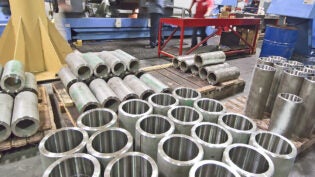
There are only a handful of scenarios in the history of the U.S. that truly changed the way capital works: the Great Depression, the Savings and Loan Crisis in the ’80s, and the most recent Great Recession, to name a few. The latest financial catastrophe has reminded the world that you cannot throw your cash into a hole and expect a money tree to grow.
More to the point, startup founders can no longer take an unproven idea and expect investors to line up with hundreds of thousands of dollars worth of offers to help build something testable. You must be more proactive.
What’s beautiful about this so-called “problem” is that technology has advanced to a stage that allows us to create functional products we can prove and test before we go and seek substantial funding for our ideas. One of the most important principles in startups today revolves around the idea of a Minimum Viable Product, or MVP. An MVP is the absolute bare minimum service or product that will allow you to get users, buyers, clients, etc. to see how they interact with your main idea. The goal is to spend as little as humanly possible in order to begin getting user feedback (which may not come directly from the user, but from an embedded ‘analytic’ function) so that you can iterate or change your product/process as needed to make it better. A great book titled “The Lean Startup” by Eric Ries is a must-read regarding the basics of the MVP.
For example, when we initially came up with the idea for BottleCamo, we needed to prove the basic concept worked first. So we made an extremely inexpensive prototype by using a hacksaw to cut a stainless water bottle in half in the garage, then stuffed it with neoprene. That was our MVP. It proved to be a lot more successful than we had originally intended.
Numerous resources exist to help you with your MVP. For example, if you intend to create a mobile app, try POP: Prototyping on Paper. POP will allow you to manually draw out your vision, with pen and paper, then upload images of the drawings and add functional buttons that link to other pages and features. In a very simple few steps, you can create the basic look and feel of your app as you click through to various pages and interfaces. With the back-end skeleton framework complete, you will be much more able to program the front end of your MVP vision.
Not building an app? Not to worry. As you decide upon the service or product that you intend to create for the problem you intend to solve, visualize all of the wonderful things you want this new company to do—and then throw them out the window. Start with one basic principle or functionality that is the foundation of the solution. When you’ve devised your principle, you can easily and inexpensively purchase a domain, quickly put up a website or landing page through WordPress, insert an analytic function in your site through Google Analytics and use Google AdWords to test keywords. This may seem complicated, but it’s not. (Tip: Just go to YouTube for detailed instructions on any of these steps.)
This will allow you to list an ad through Google and, very inexpensively, see how many people are clicking on your ad and ending up at your website. This is the first step to proving your basic concept. Once you get past the initial steps, one of the best ways to truly test your model and message is through a crowdfunding platform like Fundable.com. This will give you the opportunity to pre-sell product to your early adopters.
After you have launched your MVP and have collected some early users and data, you can use that extremely valuable information to seek funding or take other next steps necessary to grow.
Congratulations—you’ve now mitigated at least some of the risk to potential investors and proven the basics of your business model.
A version of this article originally appeared on the author’s blog.
Adam Callinan is the Co-Founder/Co-CEO of BottleCamo, the simple yet practical solution to the warm beer and broken bottle epidemics that have plagued the world for centuries. Adam is also the Founder/CEO of PiCK Ventures, Inc., the parent company of PiCK, a mobile wine technology company. Adam and his wife Katie live in Manhattan Beach, California. Follow Adam on Twitter @Adam_Callinan & @BottleCamo
Published: August 22, 2013
3388 Views
3388 Views











